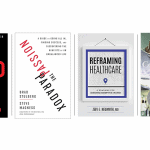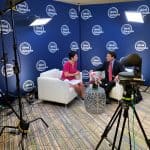The American Association of Plastic Surgeons (AAPS) was founded almost a century ago with the mission to provide a forum for scholarly activities that advance the field of plastic surgery. I had the pleasure of attending the 98th annual meeting, held April 6-9 in Baltimore, Md.
Dating back to 1925, its membership has included academic leaders from around the globe, including Sir Harold Gilles, the father of modern plastic surgeon, Paul Tessier, the pioneer of craniofacial surgery, and Joseph Murray, the Nobel Prize winner who performed the first human organ transplant.
Most medical specialty societies aim to maximize its membership, but not the AAPS. For most of its history, the society limited admission based on academic contributions and published papers. The annual selection process involved a formal review and a voting by current members. Overall, the number of new inductees was aligned with the number of member deaths over the previous year.
This year, the number of new members was higher, although still less than 5% of eligible plastic surgeons, based on having completed the requisite five years of clinical practice. Once again, their credentials were outstanding.

Although there’s no formal dress code, I remember the earliest meetings I attended as stately affairs, with every man and woman wearing either a sharp black or gray suit. The 2019 annual meeting brought out a few rebels, with some men dressed in suits of lighter hues and a few women in brightly colored dresses.
Of course, the evolution of style isn’t the type of change that matters most in these meetings. The gathering is an opportunity to learn about some of the leading advances in plastic surgery.
As in the past, the papers presented at this year’s meeting were excellent, pushing the frontiers of surgery. One described microsurgical reconstruction of lymph vessels that measure a fraction of a millimeter in diameter. Another detailed the functional outcomes after complete arm transplants and still another outlined a new technique for total penile reconstruction in patients undergoing gender-reassignment surgery.
And though much has changed in the field of plastic surgery, I was struck by the rituals and traditions I observed this week in the Renaissance Hotel in Baltimore.
The first, recently introduced, requires all AAPS presenters to begin by formally acknowledging any financial contributions they had received from drug or device companies. With that information, the audience could more knowledgeably gauge the independence of the results.
The second tradition, a holdover from past, came at the end of each presentation. As in previous years, a chosen discussant rose to critique the material. Although kinder than some discussants I remember from past meetings, this year’s group offered honesty and bluntness in their comments, uncommon in medicine today, but essential for true academic debate and progress.
Finally, there was an adventurous spirit filling the room. The audience was teeming with skilled clinicians willing to challenge the status quo and push the limits of surgical skill—not primarily for remuneration, but to reconstruct the damage done to patients, providing hope to those ravaged by cancer, accident or disease.
I could sense the luminaries of the past looking down and smiling.
In a time when many medical conferences have been watered-down revenue generators, this meeting continues the values of the past while looking boldly ahead to the future.
I look forward to attending next year’s event.
* * *
Dr. Robert Pearl is the former CEO of The Permanente Medical Group, the nation’s largest physician group. He’s the bestselling author of “Mistreated: Why We Think We’re Getting Good Health Care–And Why We’re Usually Wrong” and a Stanford University professor. Follow him on Twitter @RobertPearlMD.






